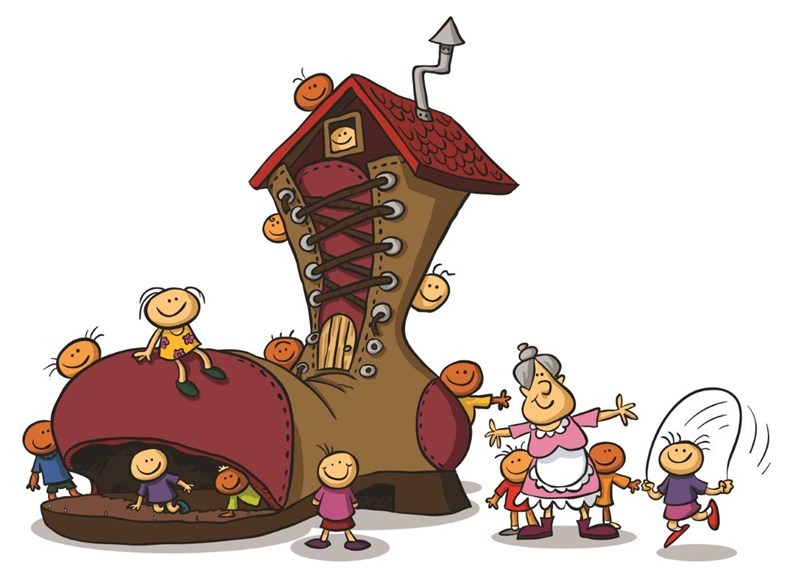Sometimes condominium units become “home” to people who really don’t belong there. With the proliferation of “over-55” communities in recent years, aging baby boomers and an economy marked by unemployment and foreclosures, there may be relatives, friends or employees moving in who are prohibited by condo docs or even local bylaws or health codes.
Infractions are on the upswing, but the managers and trustees who have to deal with these situations report that they’re reacting cautiously. Experts warn that fair housing and anti-discrimination laws may trump a condo’s bylaws.
Over-55 Rules?
Attorney Frank Lombardi, a partner in the Rhode Island office of Goodman, Shapiro & Lombardi, LLC, explains how the regulations are spelled out in most over-55 condo communities. At least one person living in the unit must be over 55, even if it’s not the owner [on the deed]. “When a [condo] unit is conveyed to tenants, at least one tenant must be over 55…,” he notes. “Any residents left who are under 55 would have to vacate. However… there is always discretion. I had a ‘senior’ community where a husband had died and his widow was under 55. The trustees allowed her to stay, although she eventually sold the unit.”
“We had another situation,” Lombardi continues, “where an elderly couple had left their over-55 unit [for a nursing home] although they were still the owners on the deed. Their adult son was living in the unit, against regulations. Neighbors were not happy with his partying lifestyle, so in this case, the board used the nuisance provisions in the condo docs to get him out [of the unit].
“And what about a sudden influx of kids? They might leave toys and bikes outside, or chalk all over the pavement. You can look at the nuisance provisions in the docs, but the board has to decide how and when it’s reasonable to charge fines for noise or defacing common elements. There has to be an accommodation.”
Job loss, divorce and health issues can force people into sharing living space, and a condo unit can fill beyond capacity with “temporary” relatives or friends. Lombardi points out that beyond the condo docs, there are state or local health and safety codes that define limits, such as maximum number of occupants in a housing unit—which may vary by state. But he warns that getting a health agent or building inspector involved should be a last resort—where it’s an extreme violation and nothing else has worked. “It’s best to fix it yourself,” he advises. Trustees and management would be more likely to seek a win-win solution. They have a close working/living relationship—and more experience—with the community and its residents than municipal code enforcers possibly could.
Exemptions May Be Allowed
Deborah Jones, PCAM, is vice president of marketing at The Dartmouth Group in Bedford, Massachusetts. “Our firm manages a number over-55 communities, and we had an interesting case at one of them. An elderly resident needed a live-in caretaker, and she had a little, au pair-type apartment built into her condo, and a caretaker moved in. Then, the caretaker’s 16-year old daughter moved in, too. The association board, acting on its own, put pressure on the owner, and the two eventually moved out. the board didn’t get any legal advice… I’m not sure if an attorney would have agreed to their action.” She notes that housing laws exempt health care workers from over-55 provisions.
Federal housing statutes that allow over-55 communities to maintain an age-exclusive population are very specific. They must be dedicated to providing housing for senior citizens and market themselves that way. These “exempt” communities cannot let younger residents in above a 20 percent limit. The rules were codified with the HUD Housing for Older Persons Act of 1995. It explained what a housing community or facility must do to qualify for the 55 or older housing for older persons exemption. [see sidebar].
Diane Koed, CMCA, is a portfolio manager at Dartmouth, and she reports on an over-55 property with over 200 units in New Hampshire “This property had originally used the percentage threshold of 90 percent [over age 55], which meant no more than 10 percent of residents could be under-55, but the ratio had changed to 80/20 in recent years. In one unit, a man had moved in with his grandfather, but the grandfather died, leaving the underage resident alone in the unit. This situation came within the 20 percent of underage residents which is allowed, but other residents still complained. Our biggest problem is that the owners don’t understand the age limits and federal regulations.”
She cites a situation that cropped up in a community which had a 100 percent over-55 regulation. “In this case, an older couple let their daughter move in with a newborn baby… who had health problems and special needs. Within a few years there was a pre-school bus coming and going into the property. Over this period of time, the board sent notices to the unit owner, but because of the child’s developmental issues, it was a tense situation. Compounding things, the grandmother in the household was diagnosed with cancer.”
Koed explains that “this was a close community—very social--and the board wanted to maintain a personal connection, in a neighborly way, but [other] residents were not happy. It’s really walking a fine line for board members.” She notes that the daughter and her preschooler did finally move out, “but the board did learn that they’ll have to do it differently next time. From the beginning, they allowed a little time [for the two to move out], but they didn’t know it would take so long and cause so many complaints. They realized they should have adhered to the rules more closely, and perhaps set a definitive date for the parties to vacate.”
Local Bylaws Impact Condo Regs
Sometimes the restrictions on occupancy go beyond condo regs or housing laws. “I recently had an issue at a property of 45 units which is capped at two persons per unit… because of the septic system capacity,” reports Tim Arel, owner of North Point Management in Amherst, New Hampshire. “It’s one of our over-55 properties. There was a woman who was recently widowed, and her son and daughter-in-law moved in… then her adult granddaughter. So not only were they in violation of the condo rules of two occupants per unit, but limits on occupancy were dictated by the the [town’s] special permit and subject to review of the local zoning board. Sot even though the association’s trustees wanted to be compassionate, they had to consider the limits of the septic system.”
“In this case, the trustees sent a notice to open dialog with the family. The family then moved the elderly widow to a nursing home, but they were not responding to communications from the board. The son eventually responded with an email describing the family situation, but without making any effort to find a solution… ask permission or come to a meeting or set a time frame to vacate. The board sent a letter warning of violations that included exceeding the number of occupants, and that no one in the unit was over-55. It outlined fines that would be instituted and a time frame. This was followed by notification that the fines were being applied, and a couple of weeks later, the unit was vacated, and then it went up for sale.”
“I feel that the trustees handled this situation appropriately,” states Arel. “Luckily, in this case, they didn’t have to engage counsel. They tried to establish an open dialog before taking punitive action. In this case, [the board] succeeded by charging fines. If people don’t respond to fines,” he continues, “stop [that action] and move to the next step, which is legal action… which may mean suing the unit owner. Granted, no one wants the consequences of legal action… Associations cannot afford it.”
These occupancy violations are bound to increase in coming years, as “you have these baby-boomers getting into their 70s,” Arel points out. “I know a perfect example of an over-55 community being pro-active about this issue. This property has over 70 units and was developed 15 years ago, and was self-managed. Now the owners are all [at least] in their 70s and they felt they couldn’t do the daily management effectively anymore, and hired [our] management. They understood the reality of their situation… They’ve been uniquely pro-active about planning for the future.”
“I would recommend the model that they have adopted,” Arel continues. “It’s inevitable that elderly residents will need care and have support staff or younger family members moving in. So the trustees must keep reminding residents that ‘This is what the rules say and this is the consequence.’ Residents should be made aware of what to expect… There’s a protocol with annual reminders. By setting expectations, the board will be perceived as helping residents and not being combative.”
As Lombardi and others have advised, trustees and managers should always strive to settle infractions involving occupancy internally, by being pro-active with unit owners about expectations. When boards resort to court actions and municipal inspectors, they may see problems spiral instead of disappear.
Marie Auger is a freelance writer and a frequent contributor to New England Condominium.







Leave a Comment